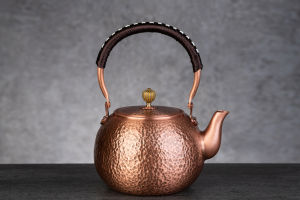In contrast to the Western idea of packaging, which often emphasizes visibility, Tsutsumi reflects a distinctive cultural approach. Rather than focusing on flashy appearances, Tsutsumi centers around protecting a gift with understated yet elegant materials and designs.
This concept is not merely about concealing the contents but enhancing the beauty of the package, allowing for a unique aesthetic experience that prioritizes both simplicity and refinement.
The Historical Roots of Tsutsumi
The practice of Tsutsumi has deep historical connections to Japanese traditions, particularly in Shinto rituals. In ancient times, offerings to the gods were often presented in wrapped or protected forms. These gifts—ranging from rice to dried fish—were placed on natural materials like leaves, bark, or bamboo. In particular, the use of paper was highly regarded due to its sacred association.
In Japanese, the words for "deity" and "paper" share the same pronunciation, "kami," making paper a revered medium for wrapping offerings. This spiritual connection adds layers of meaning to the act of giving, imbuing the wrapped gift with a sense of reverence and peace.
The Symbolism of Paper in Tsutsumi
Paper, especially the traditional handmade variety known as "washi," plays a crucial role in the Tsutsumi tradition. Washi is often considered a symbol of peace and purity, further elevating the significance of the items wrapped in it.
The practice of wrapping gifts in paper is not only about protecting the gift but also about acknowledging its sacredness. The careful selection of materials and the time invested in wrapping emphasize that the gesture of giving holds more value than the gift itself.
Design and Aesthetics in Tsutsumi
Tsutsumi is characterized by an emphasis on showcasing the uniqueness of the gift through carefully selected wrapping materials. Whether the item is a box, a piece of clothing, or a flower, the wrapping method is chosen to highlight its inherent characteristics. For instance, dry paper with precise folds is often used for geometric items like boxes, while soft, enveloping paper may be chosen for round objects.
The materials and shapes used in wrapping are meant to enhance the visual appeal of the gift, and even the colors are selected to either complement or create a contrast with the object inside.
Asymmetry and Elegance in Tsutsumi
In Japanese aesthetics, asymmetry is valued for its ability to engage and stimulate the eye. Tsutsumi often takes on asymmetrical shapes, resulting in designs that are visually dynamic.
The wrapping may include overlapping colors, geometric points, and triangles that create a sense of balance while breaking away from conventional symmetry. This approach highlights the notion that beauty lies not in perfect symmetry but in thoughtful, deliberate design.
Special Tsutsumi for Specific Gifts
Certain objects require unique wrapping techniques in order to properly showcase their shape or cultural significance. For example, containers for drinks are typically left partially exposed, with only the top covered to protect the contents.
Flowers, on the other hand, are often wrapped using a technique called hanatsutsumi, where the upper part of the flower remains visible while the rest of the plant is enveloped in decorative paper. This allows the beauty of the flower to be appreciated while still offering protection during transport.
Natural and Traditional Materials in Tsutsumi
The materials used in tsutsumi are often natural, such as leaves, straw, and rope. These elements are not only functional but also possess symbolic value. For instance, certain knots used in gift-wrapping are symbolic of binding the giver and receiver in a meaningful connection.
Additionally, mizuhiki, or decorative paper threads, are often used to tie gifts, with different colors representing various occasions. These symbolic ties further elevate the significance of the gift-giving process.
The Role of Furoshiki in Tsutsumi
Furoshiki, a square piece of cloth, is another key element in the art of tsutsumi. Originally used to carry personal belongings to the bathhouse, it has evolved into a versatile tool for wrapping and transporting gifts. Furoshiki can be adapted to wrap items of various shapes and sizes, offering a flexible and functional option for packaging. The fabric is often reused, adding a layer of sustainability to the practice of gift-giving.
Modern Adaptations of Tsutsumi
While traditional Tsutsumi techniques remain an integral part of Japanese culture, contemporary design has also drawn inspiration from these methods.
Modern packaging often incorporates the use of natural materials and the geometric aesthetics of Tsutsumi, blending ancient traditions with modern functionality. As a result, the spirit of Tsutsumi continues to influence the way gifts are presented, preserving its cultural significance while adapting to contemporary needs.
The art of Tsutsumi transcends the simple act of wrapping a gift. It is a practice that symbolizes respect, thoughtfulness, and connection, emphasizing the value of the gesture over the item itself. Through careful selection of materials, intricate designs, and cultural symbolism, Tsutsumi transforms gift-giving into an act of beauty and reverence. This rich tradition continues to thrive today, influencing both modern packaging and the timeless art of presenting a gift with care and meaning.


